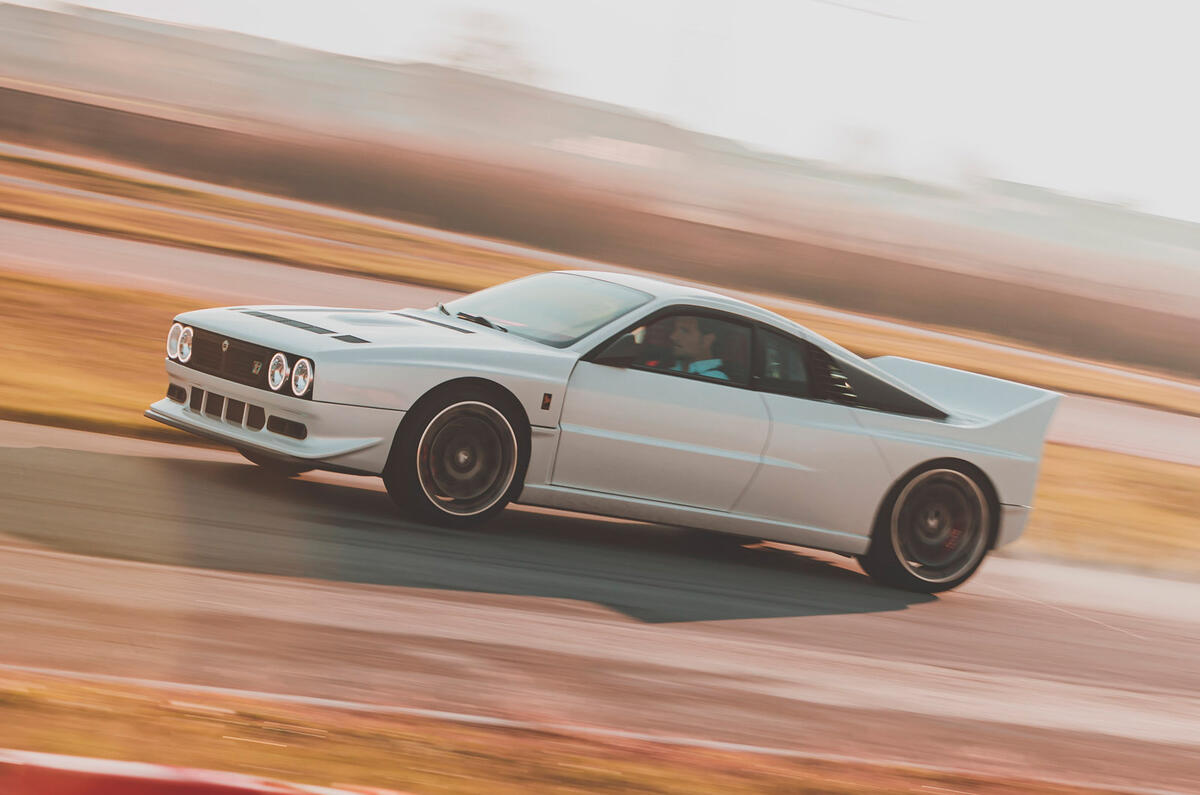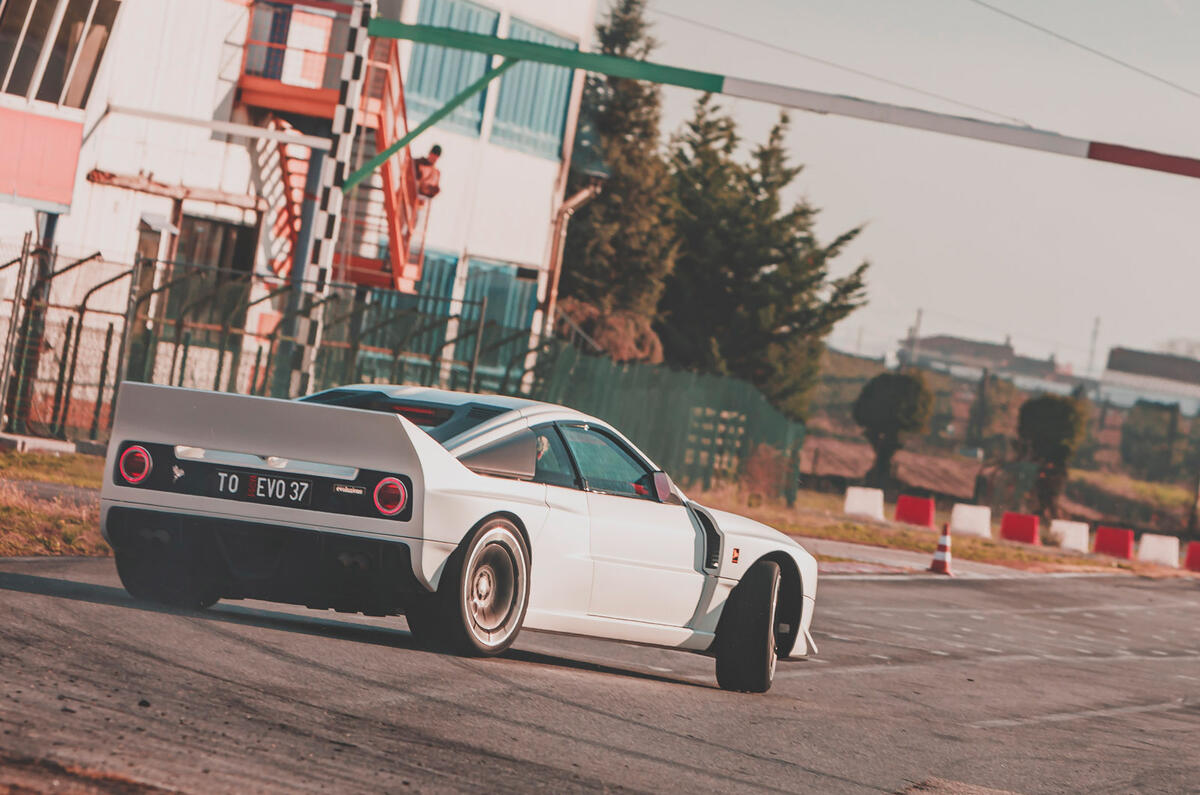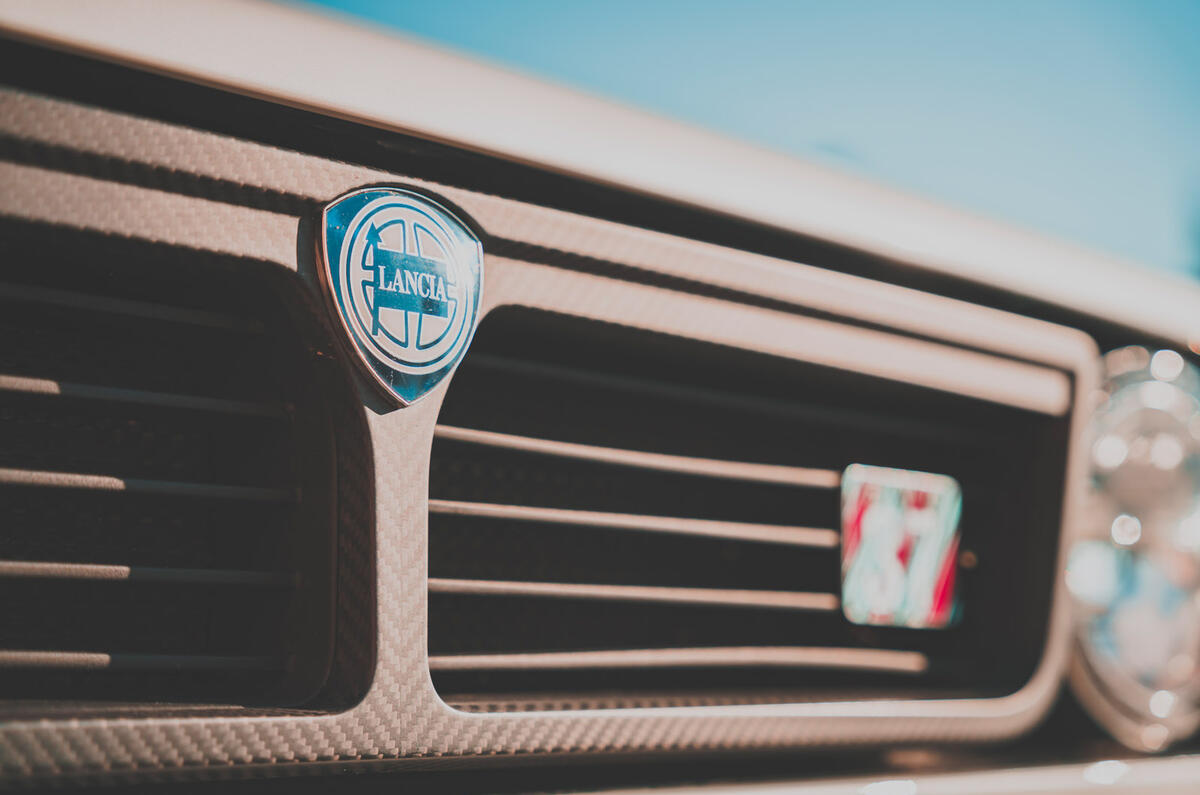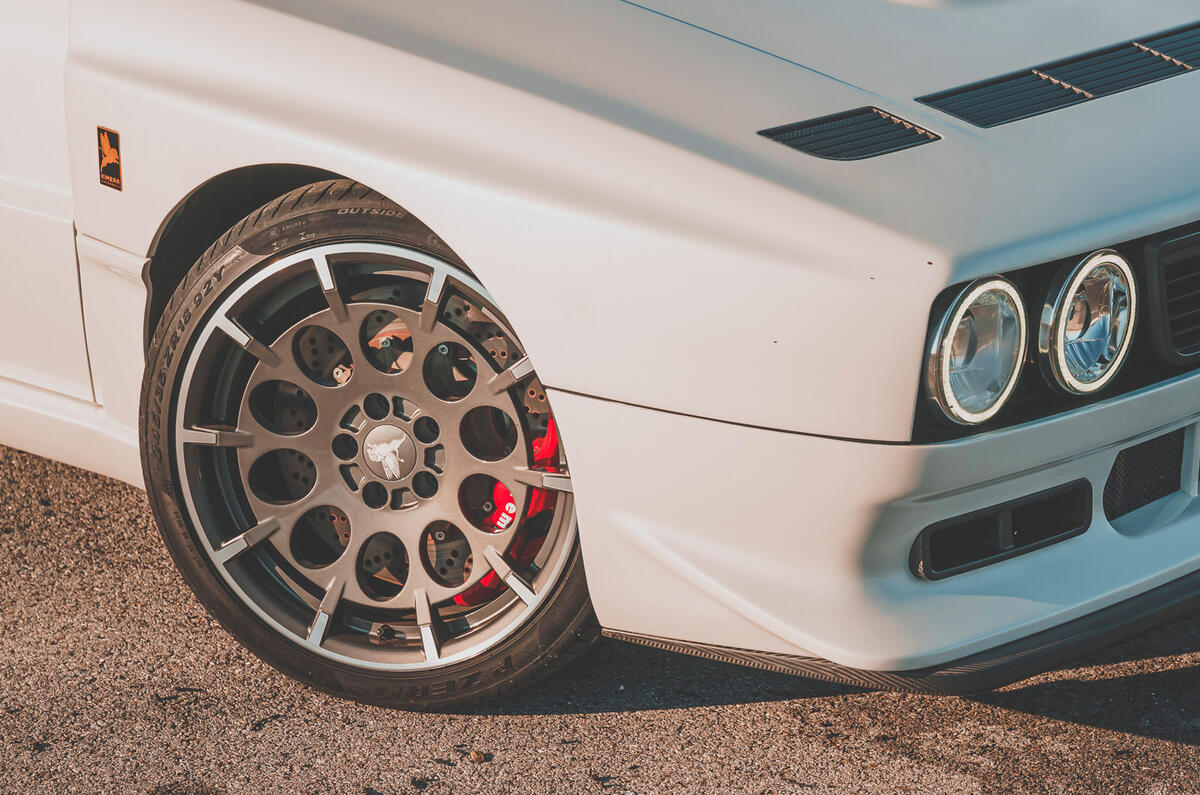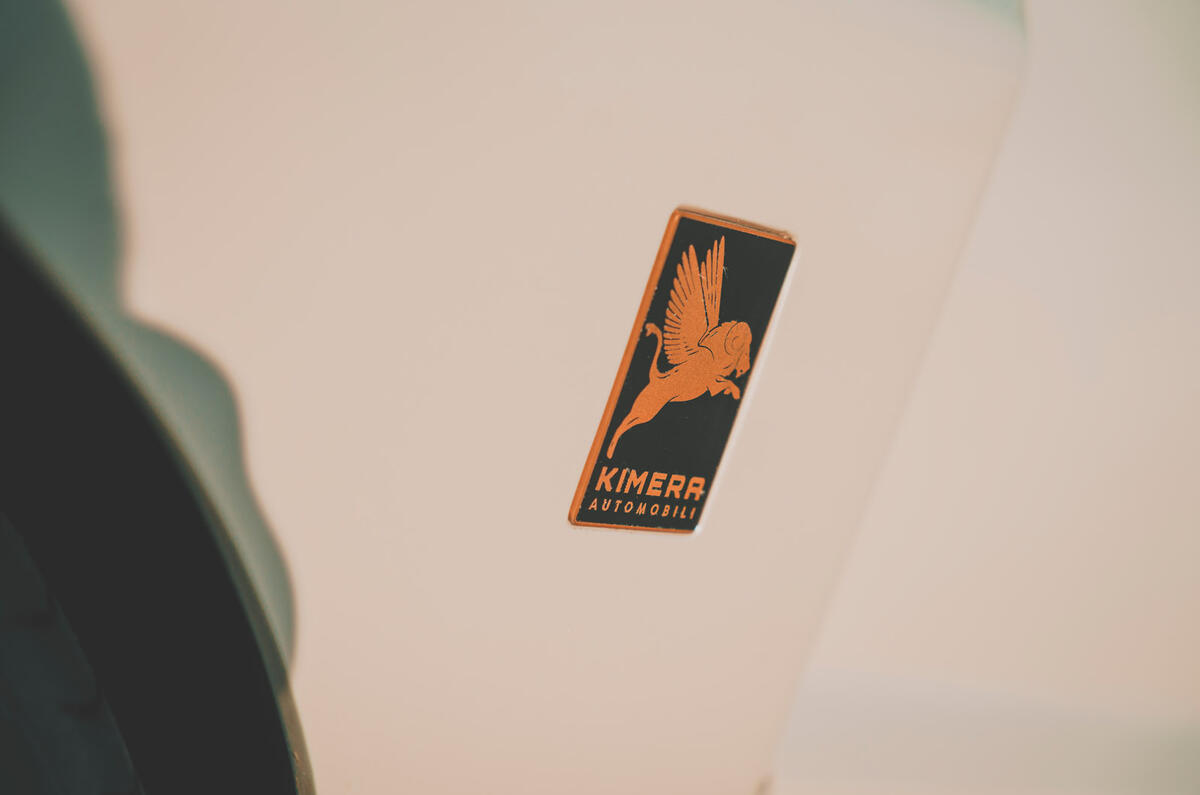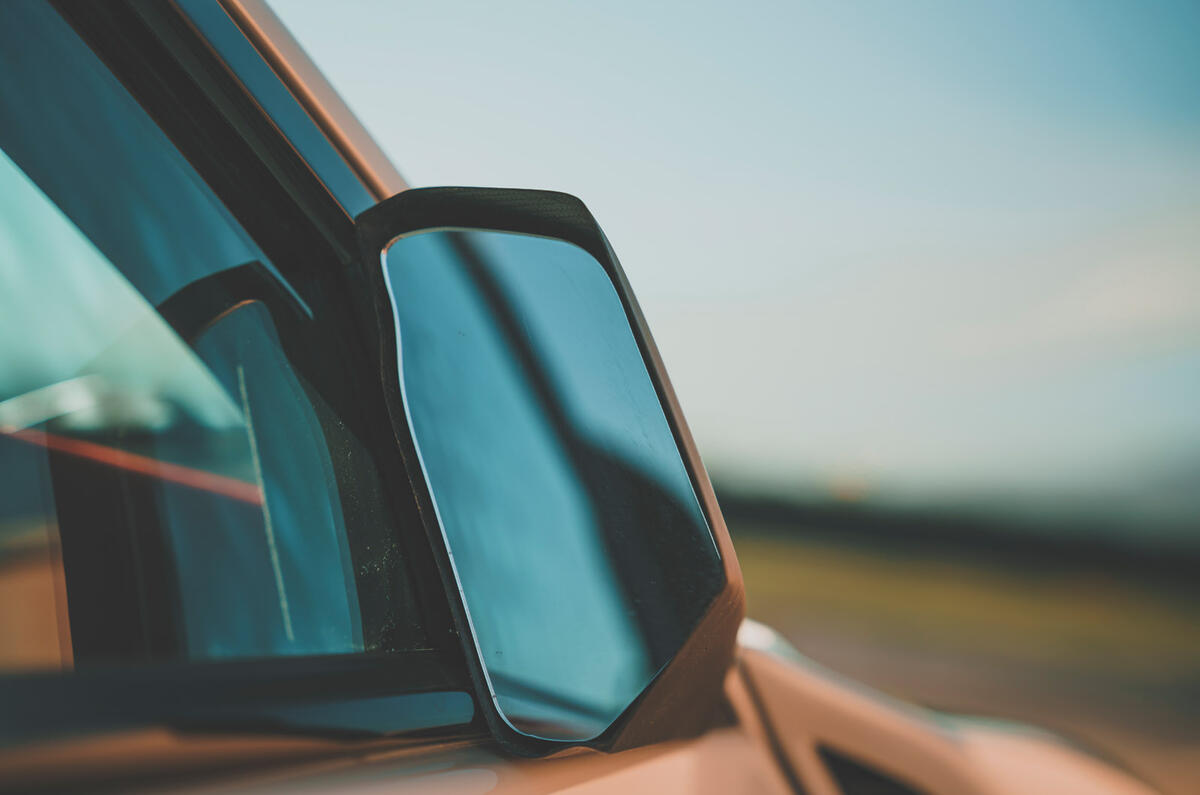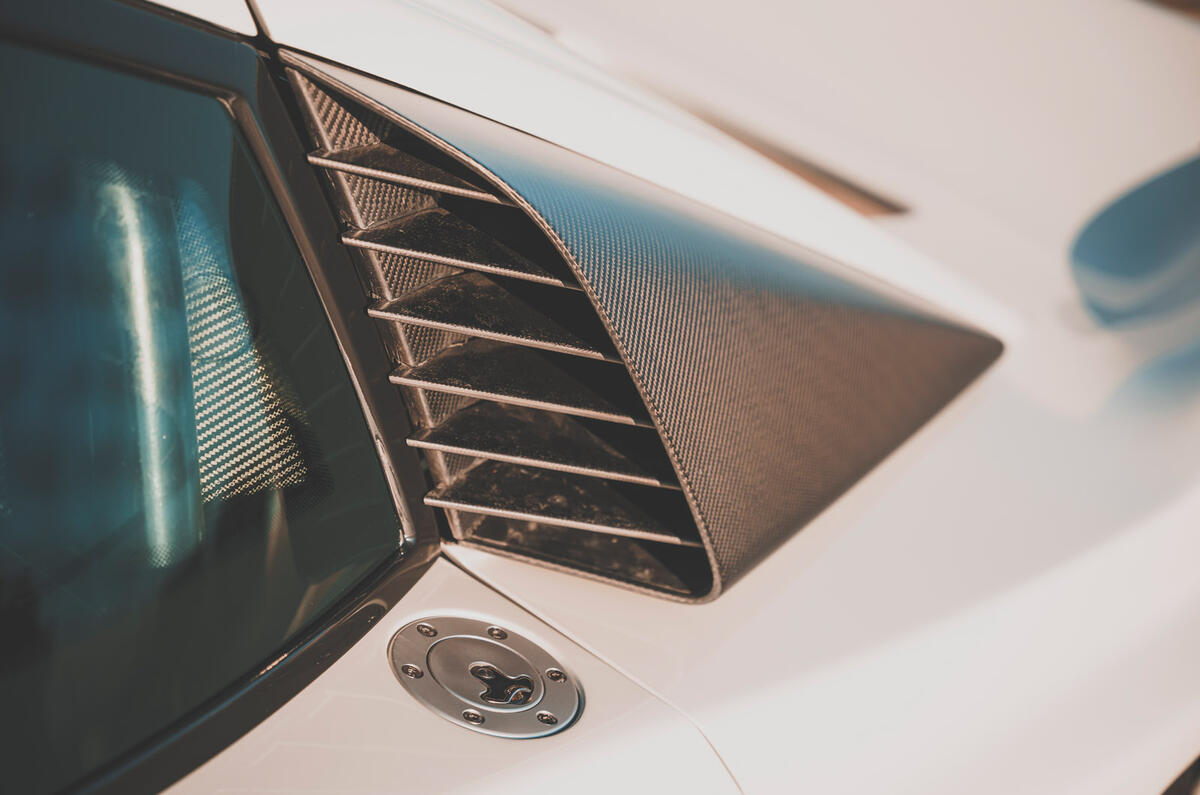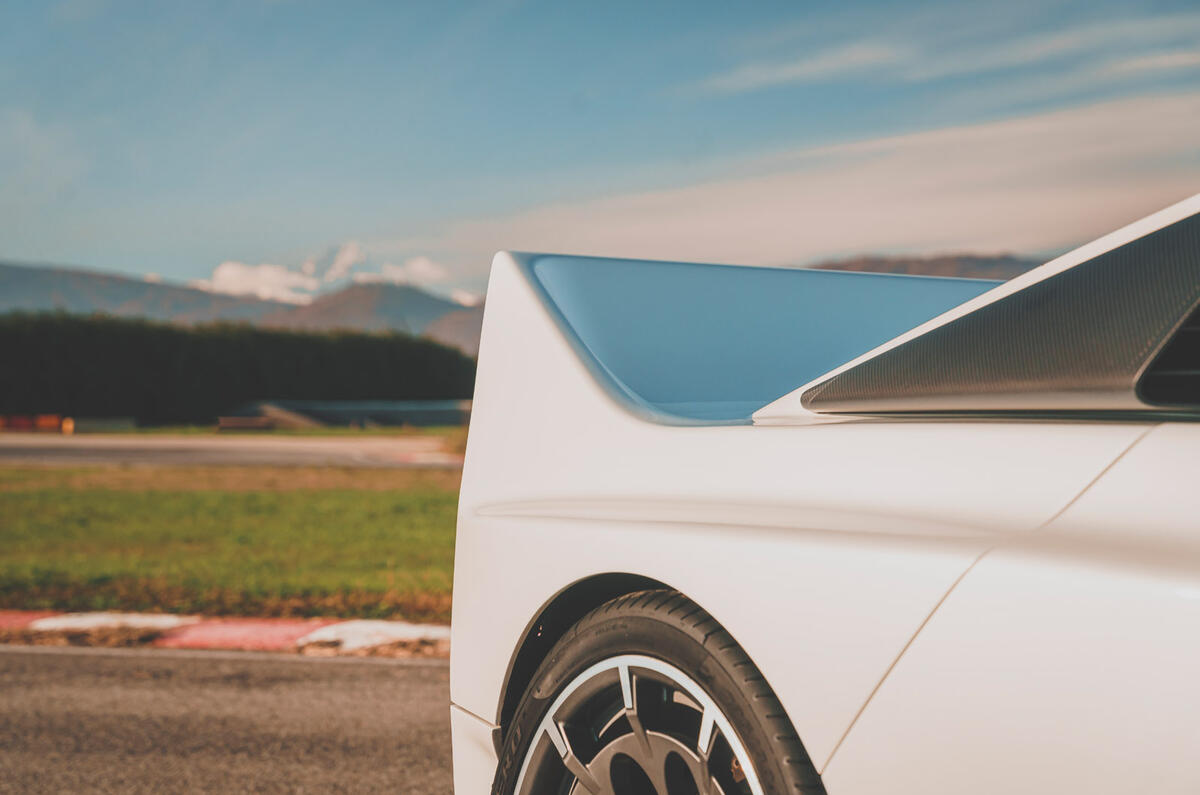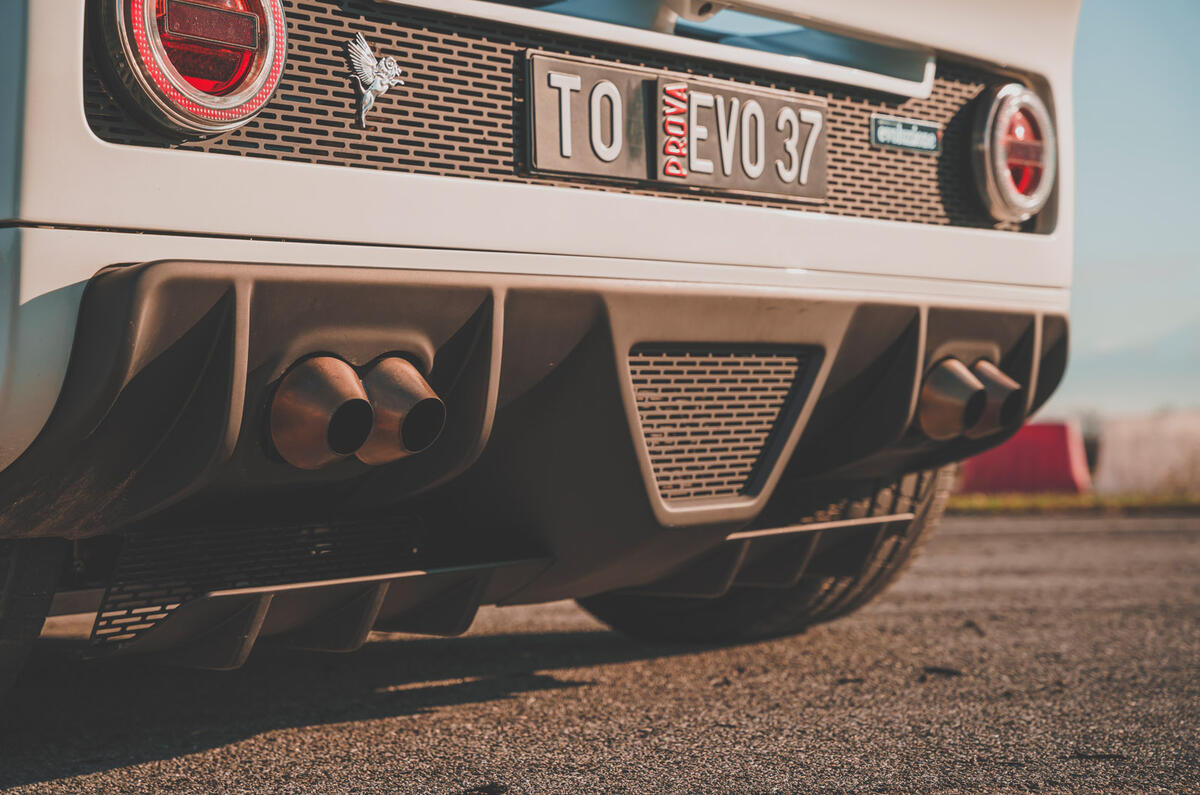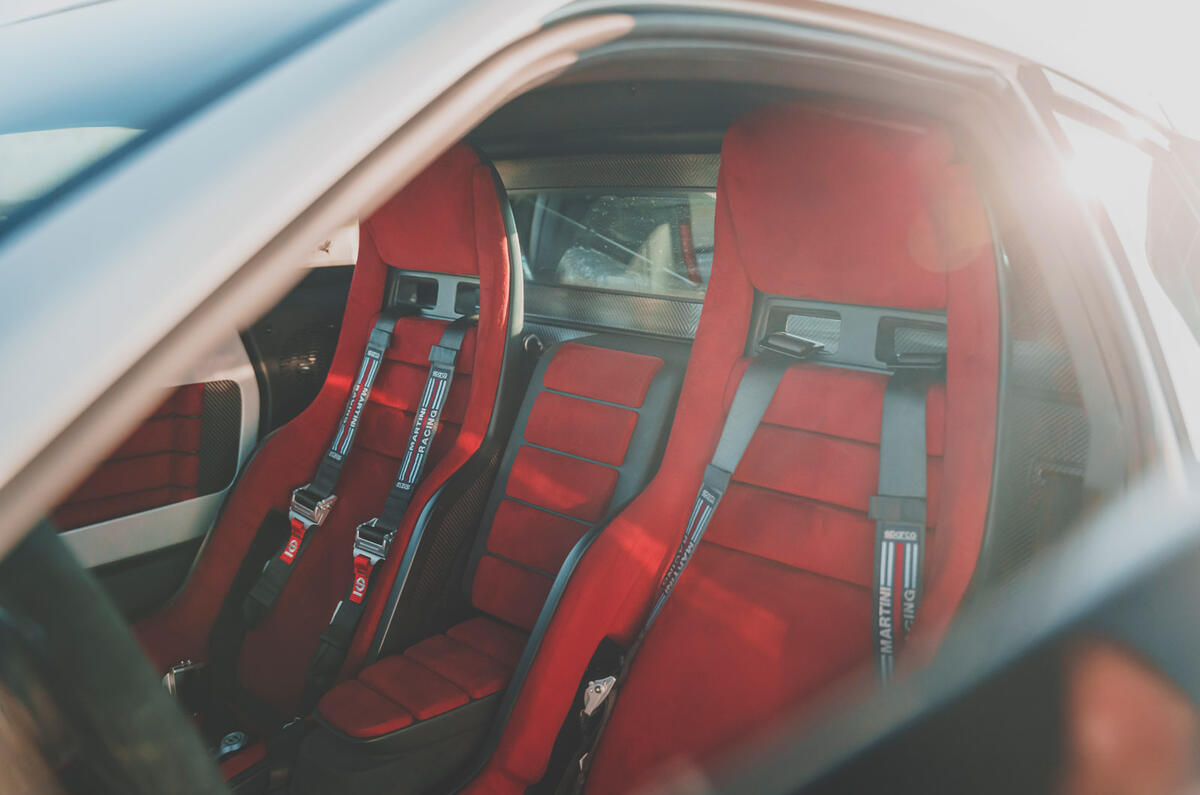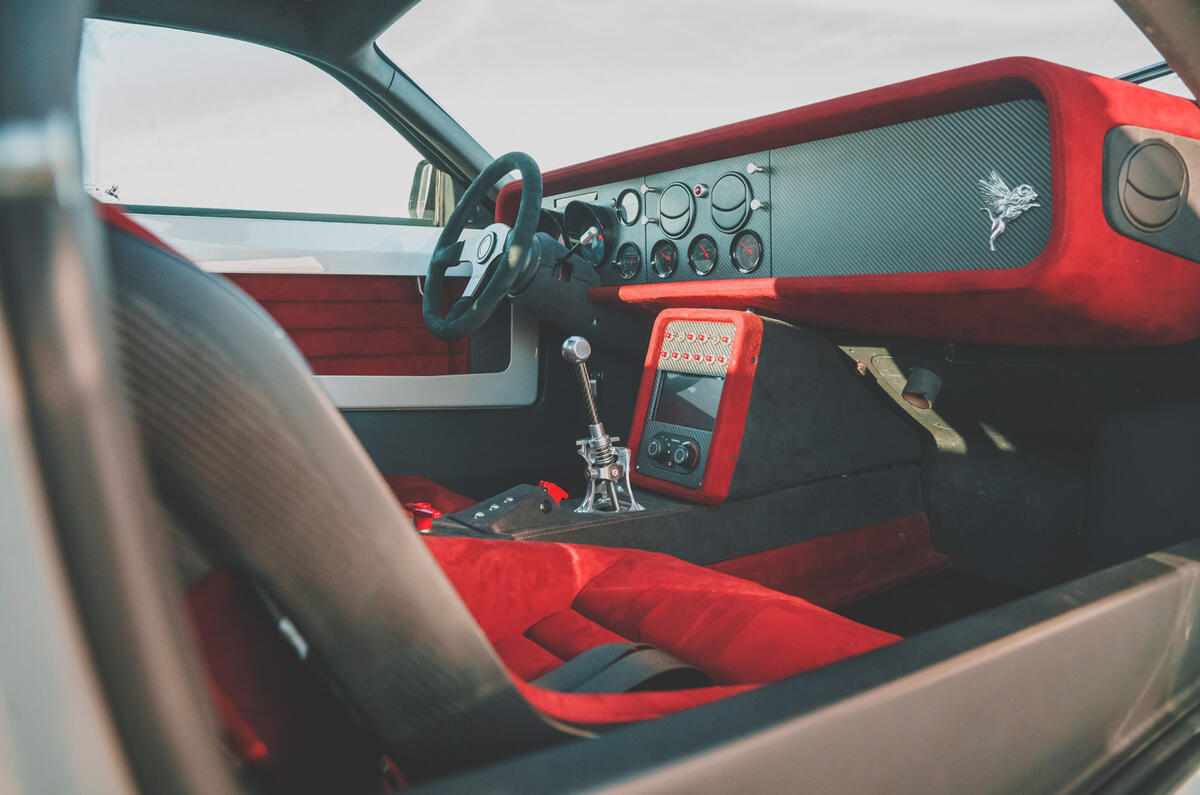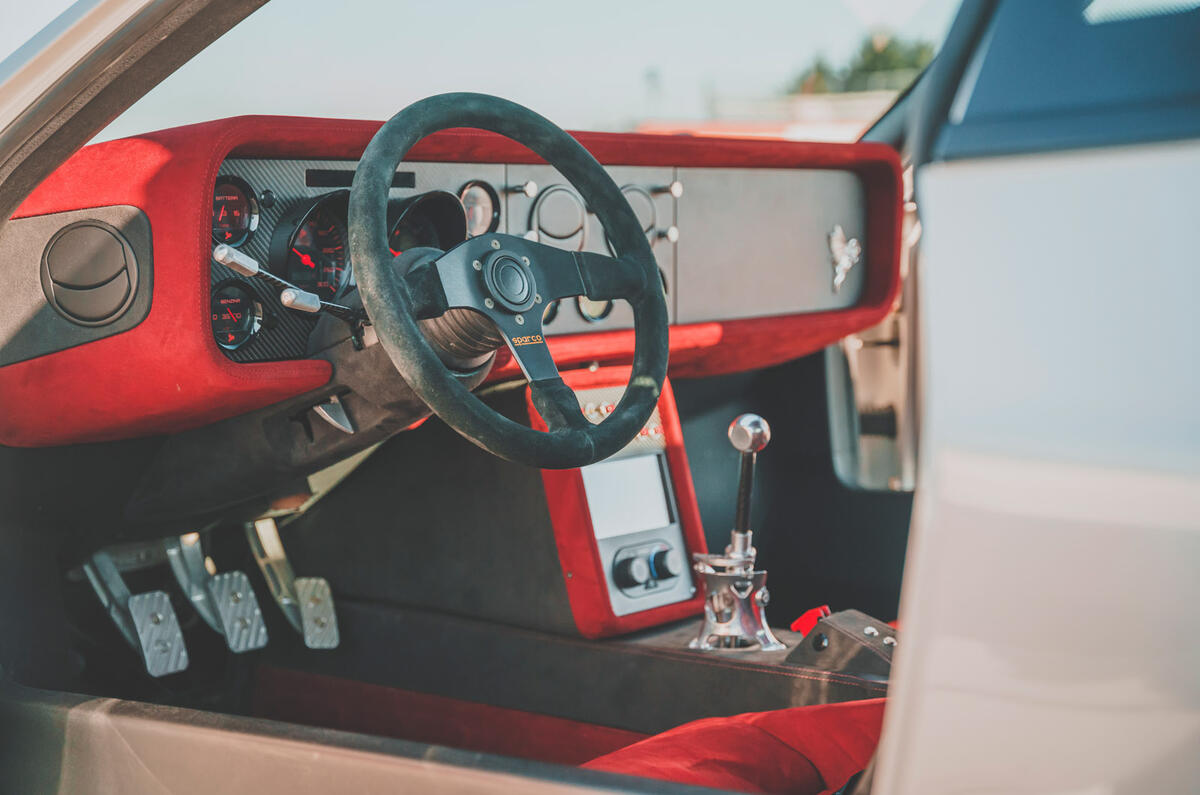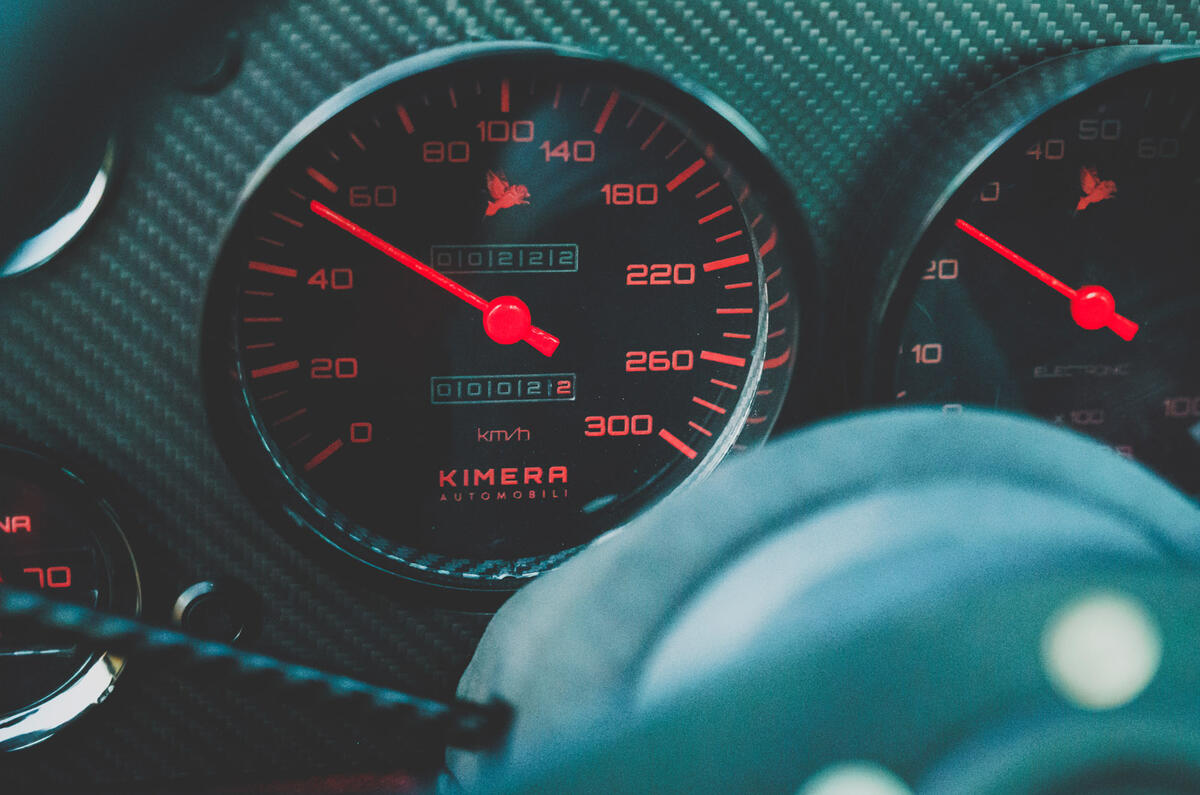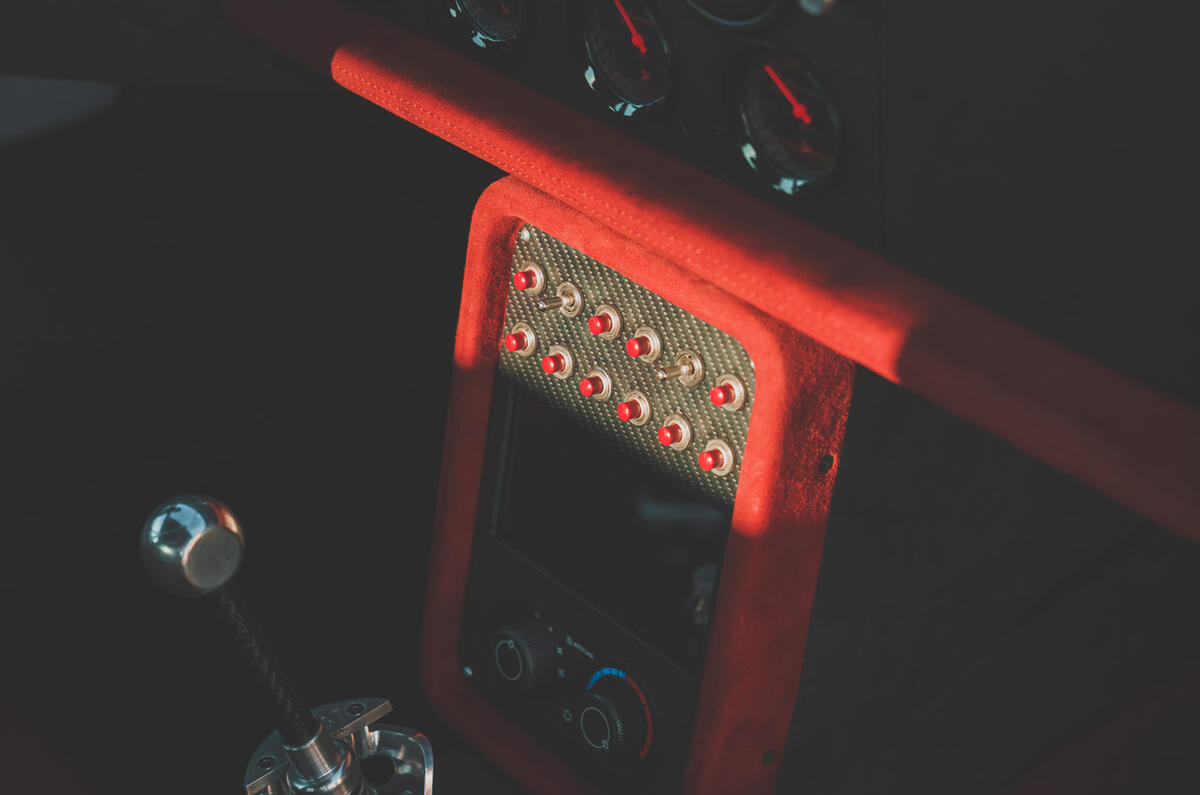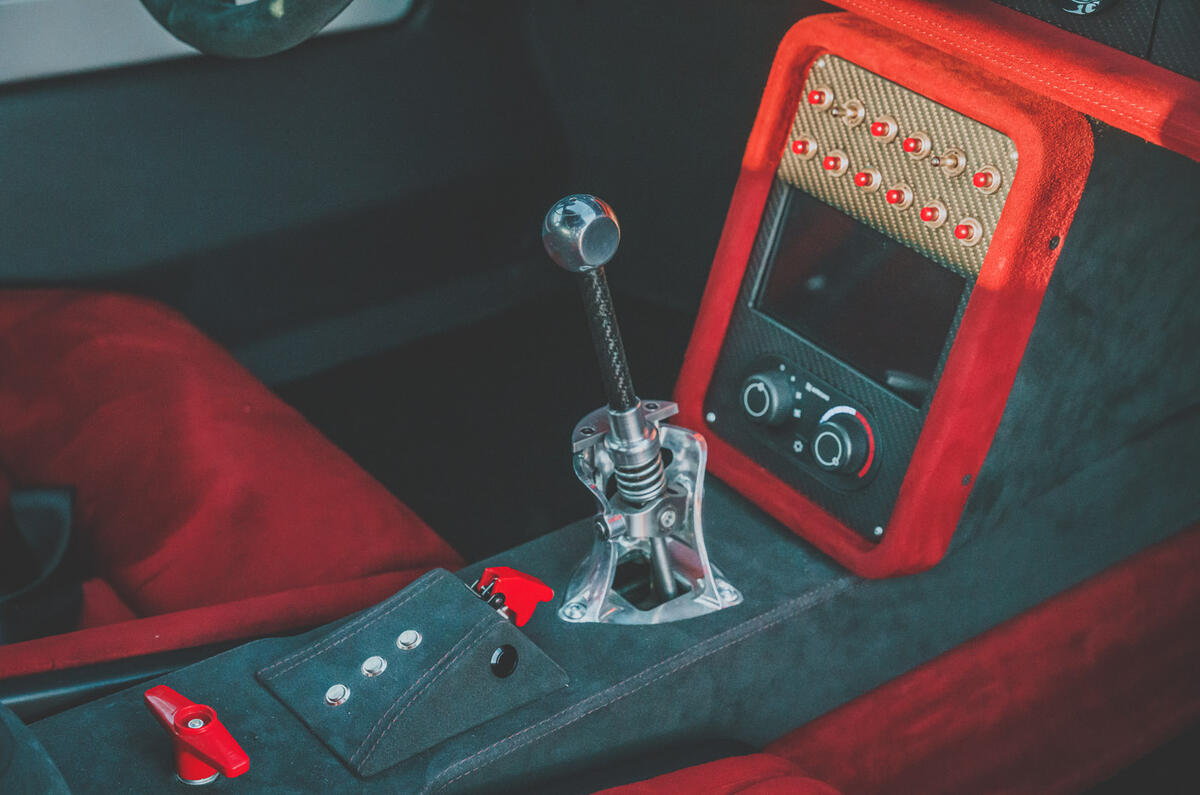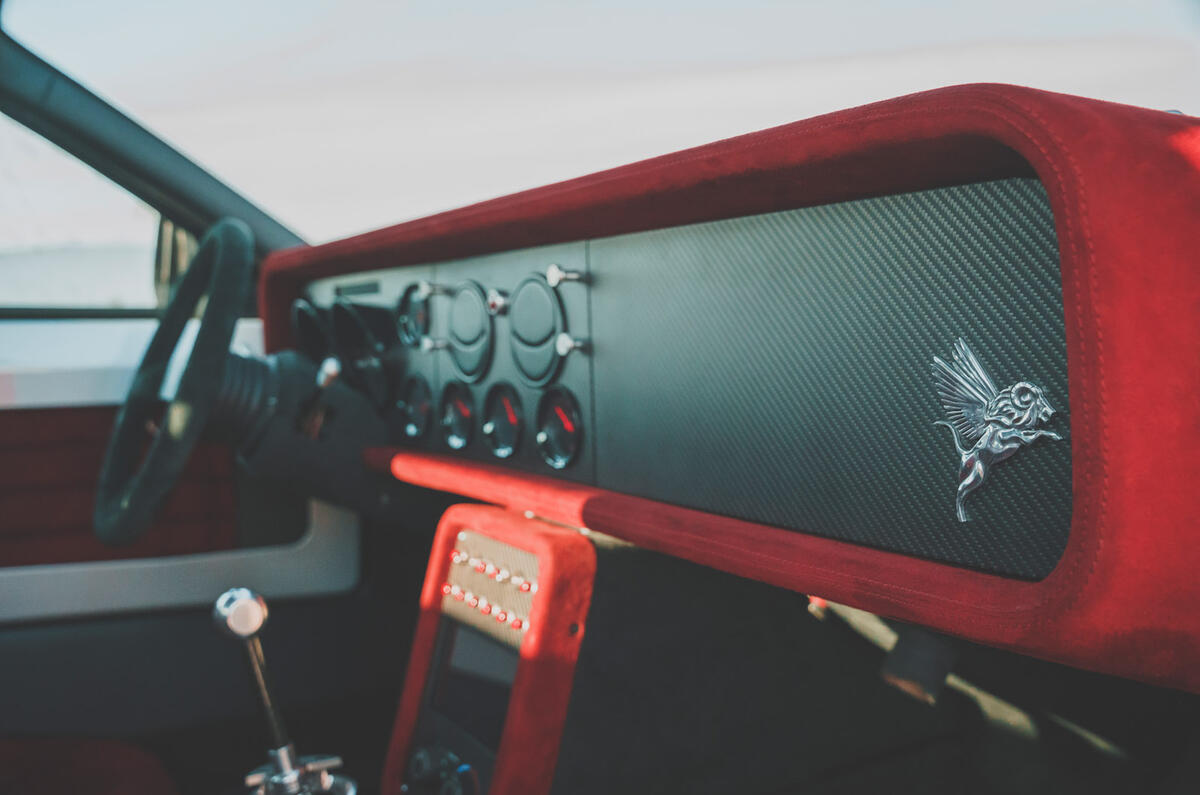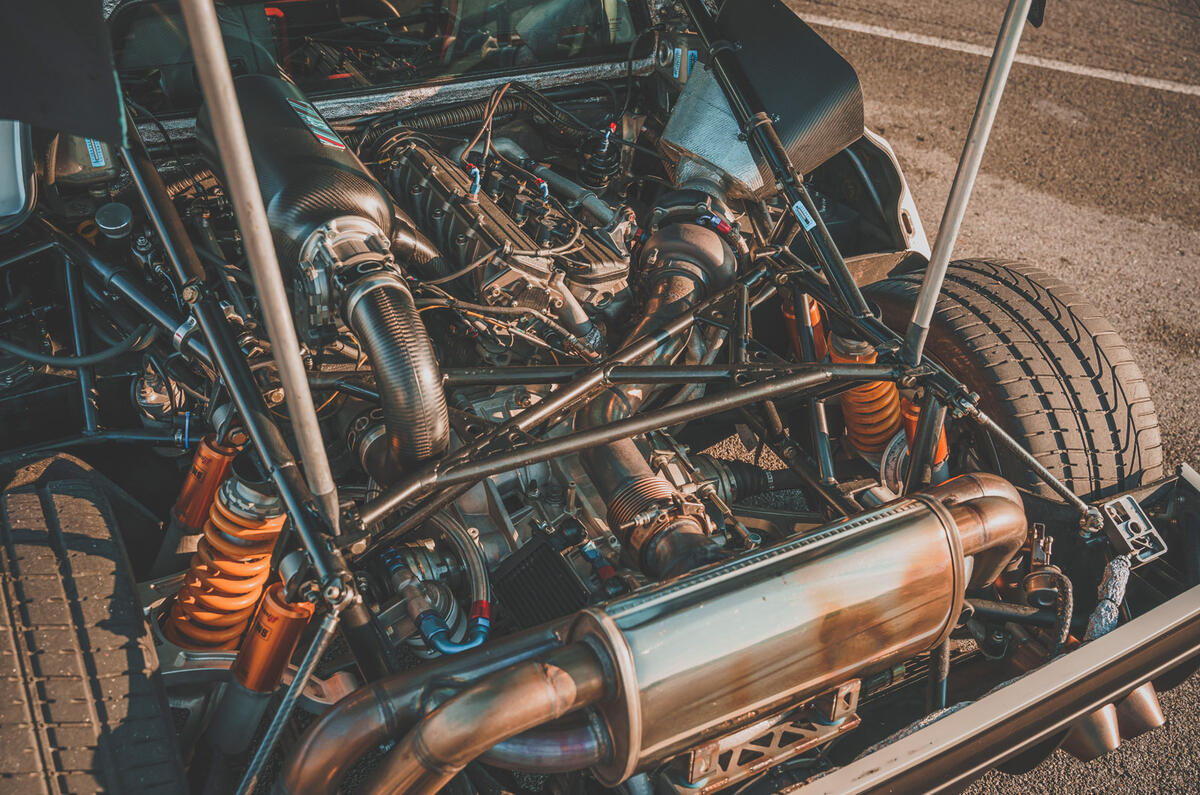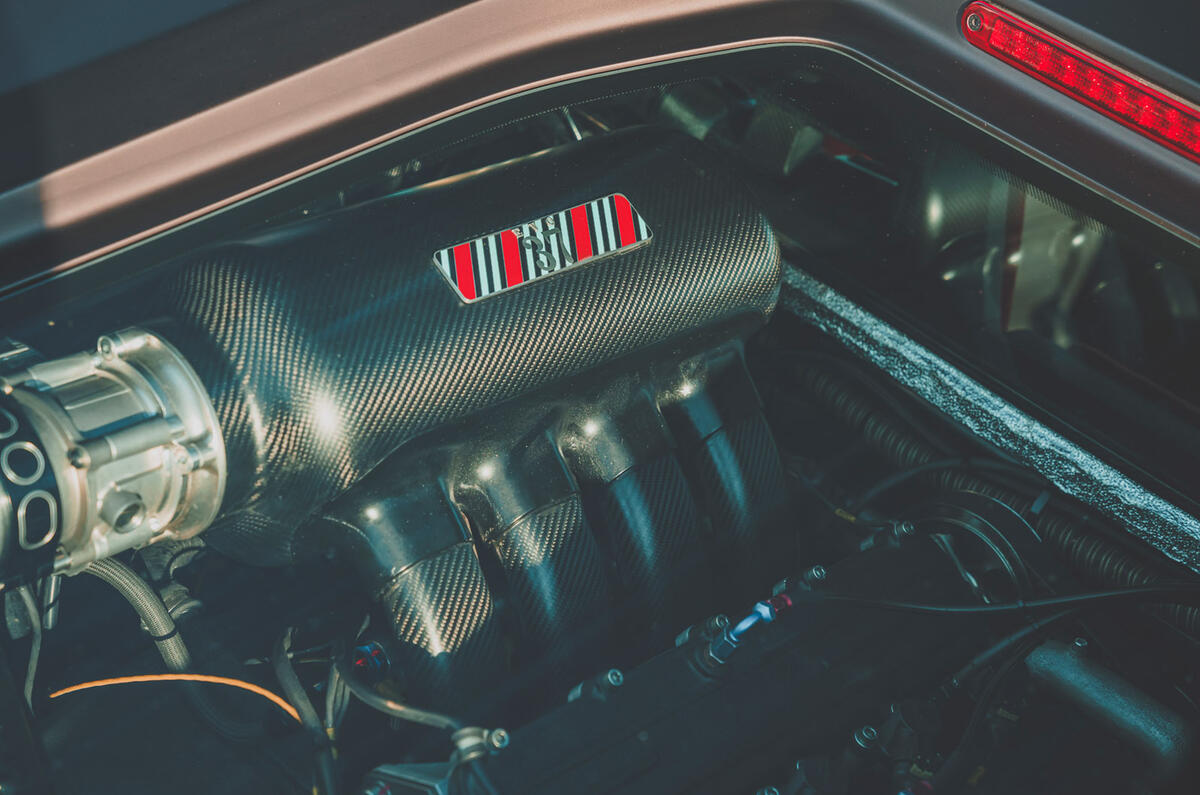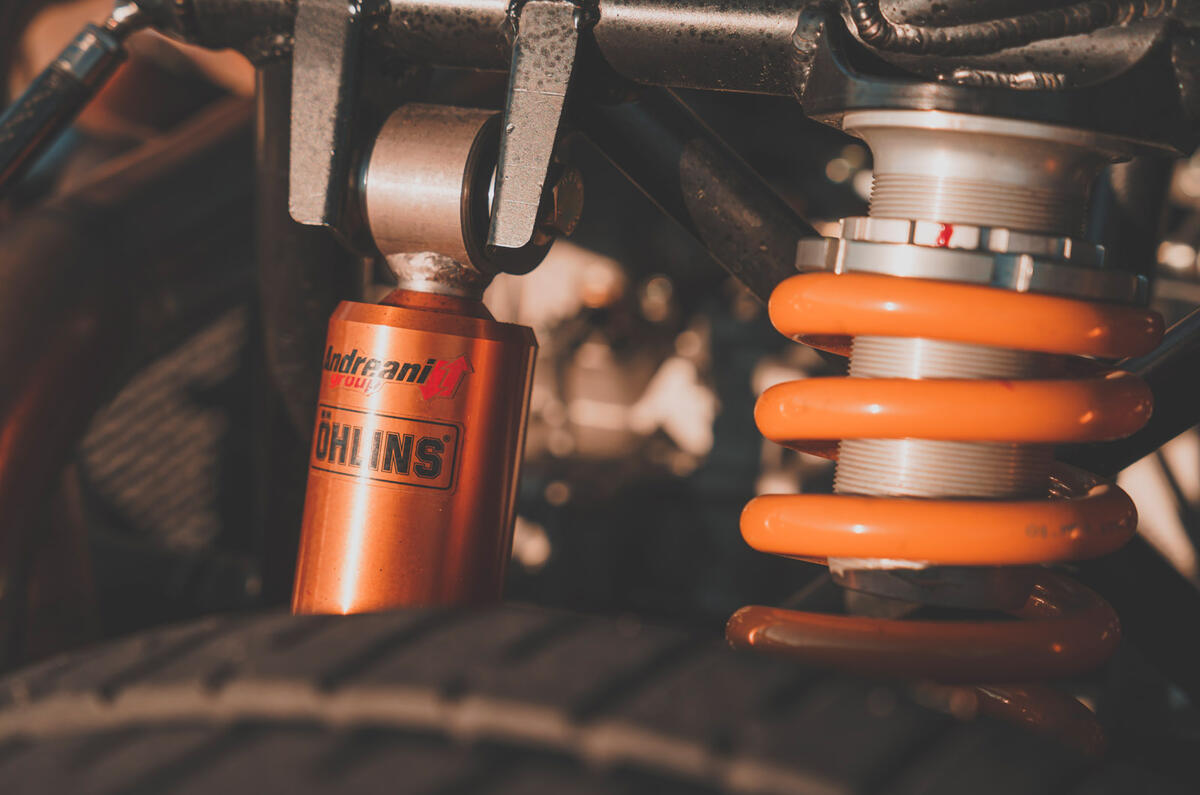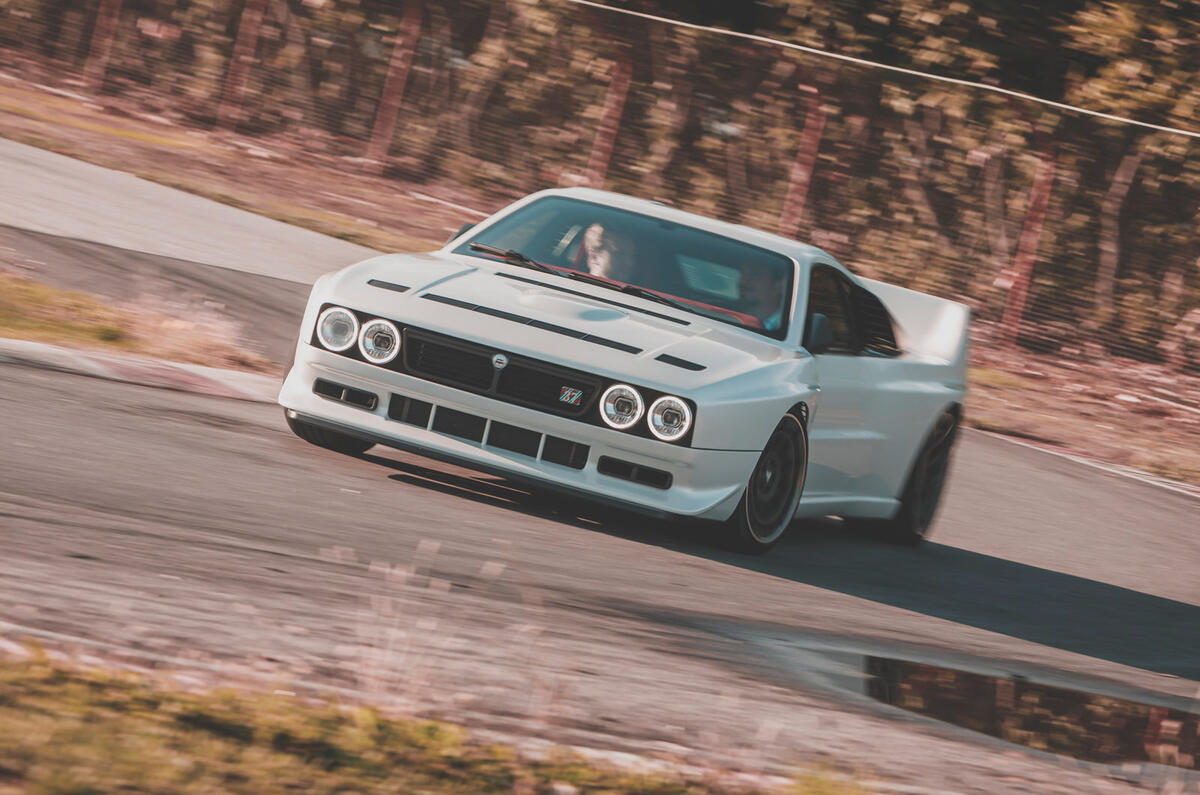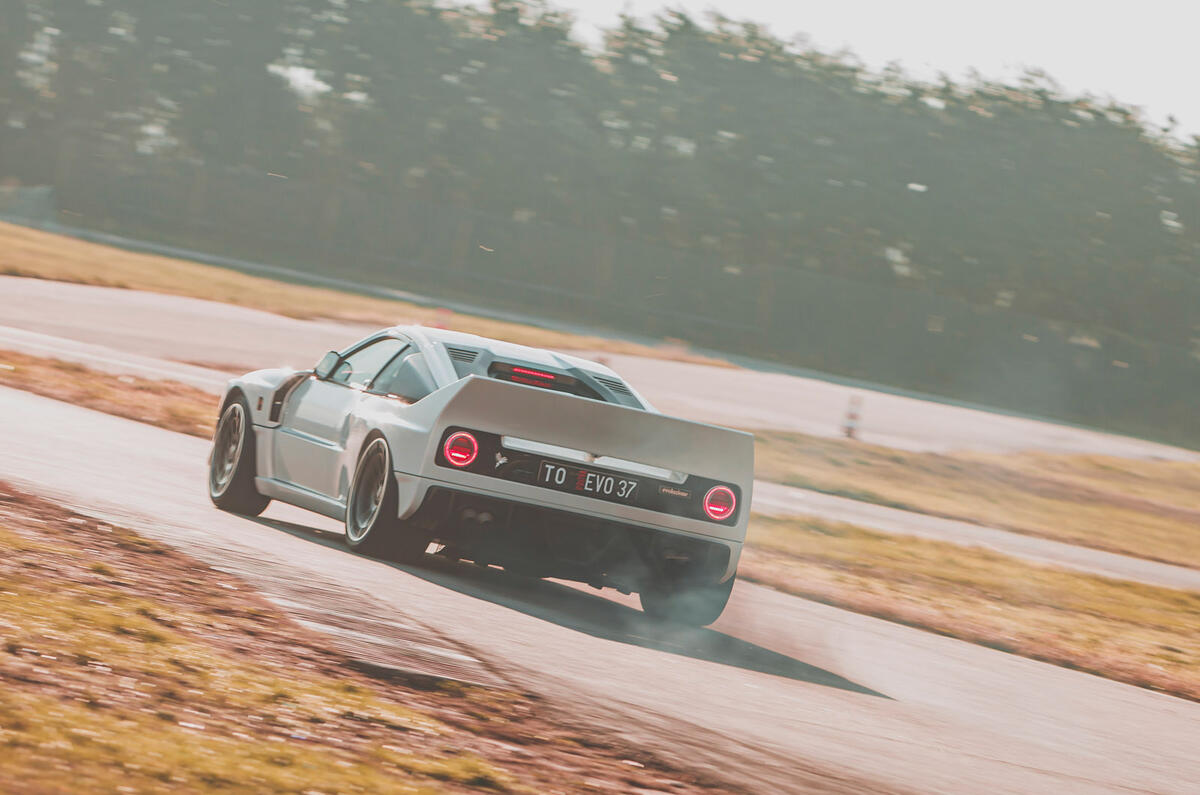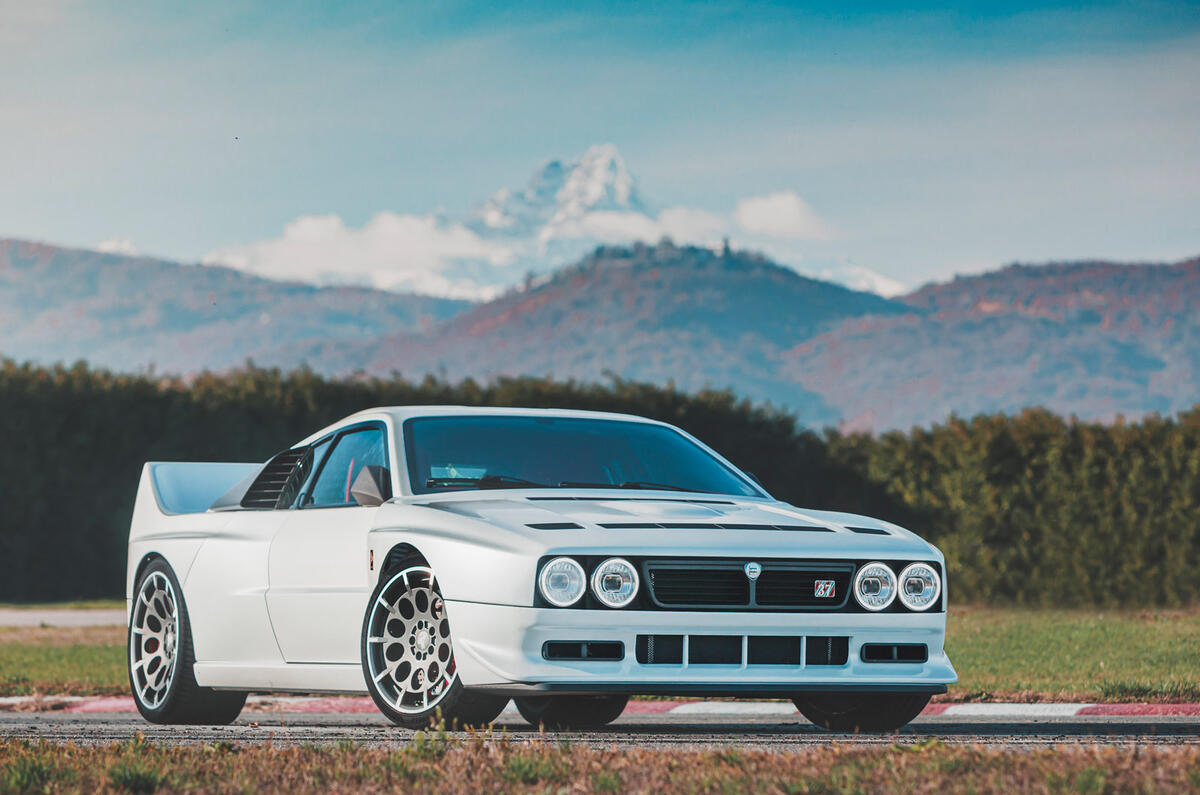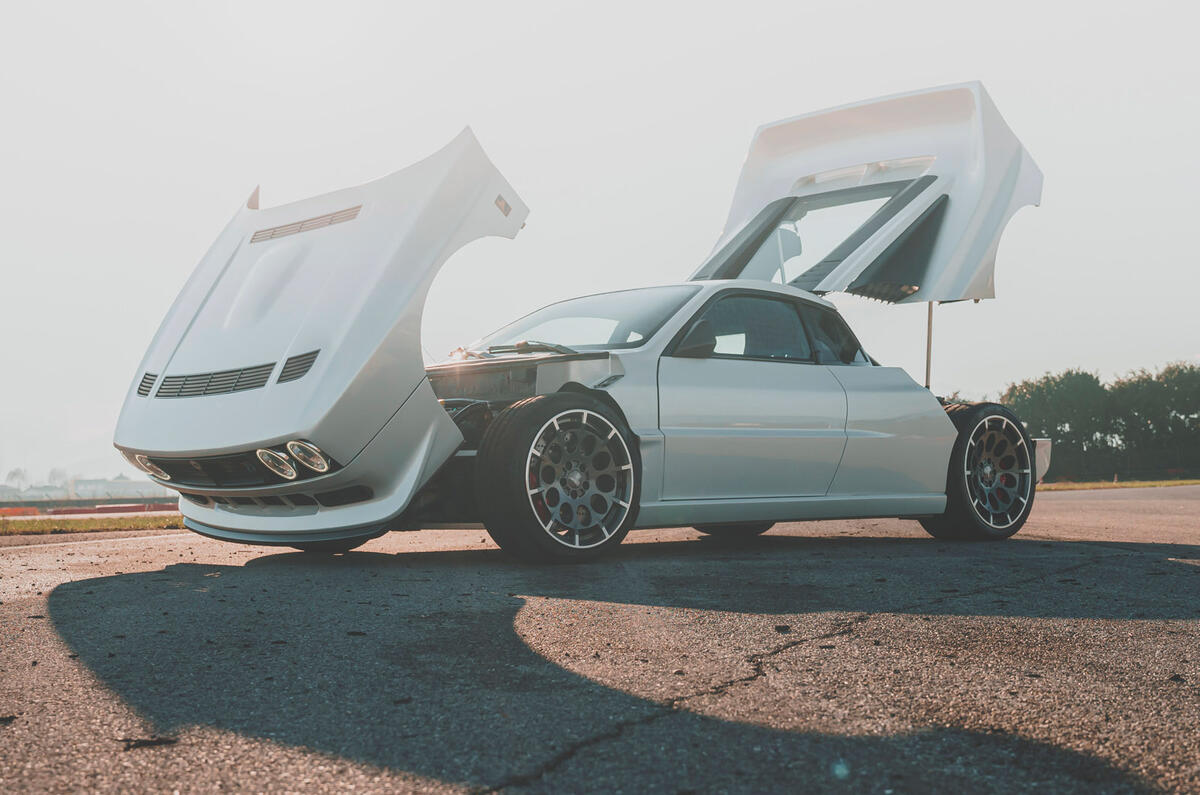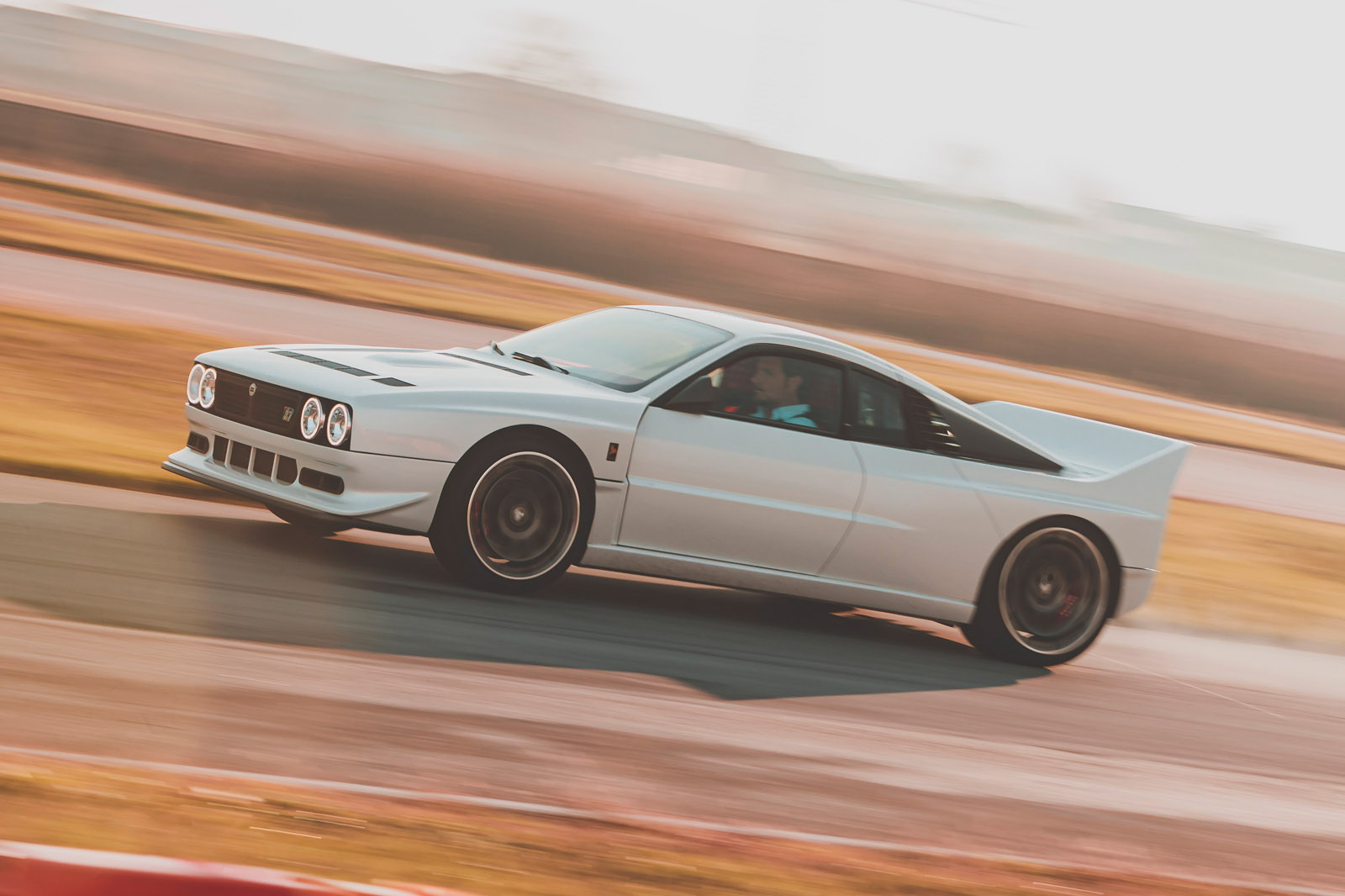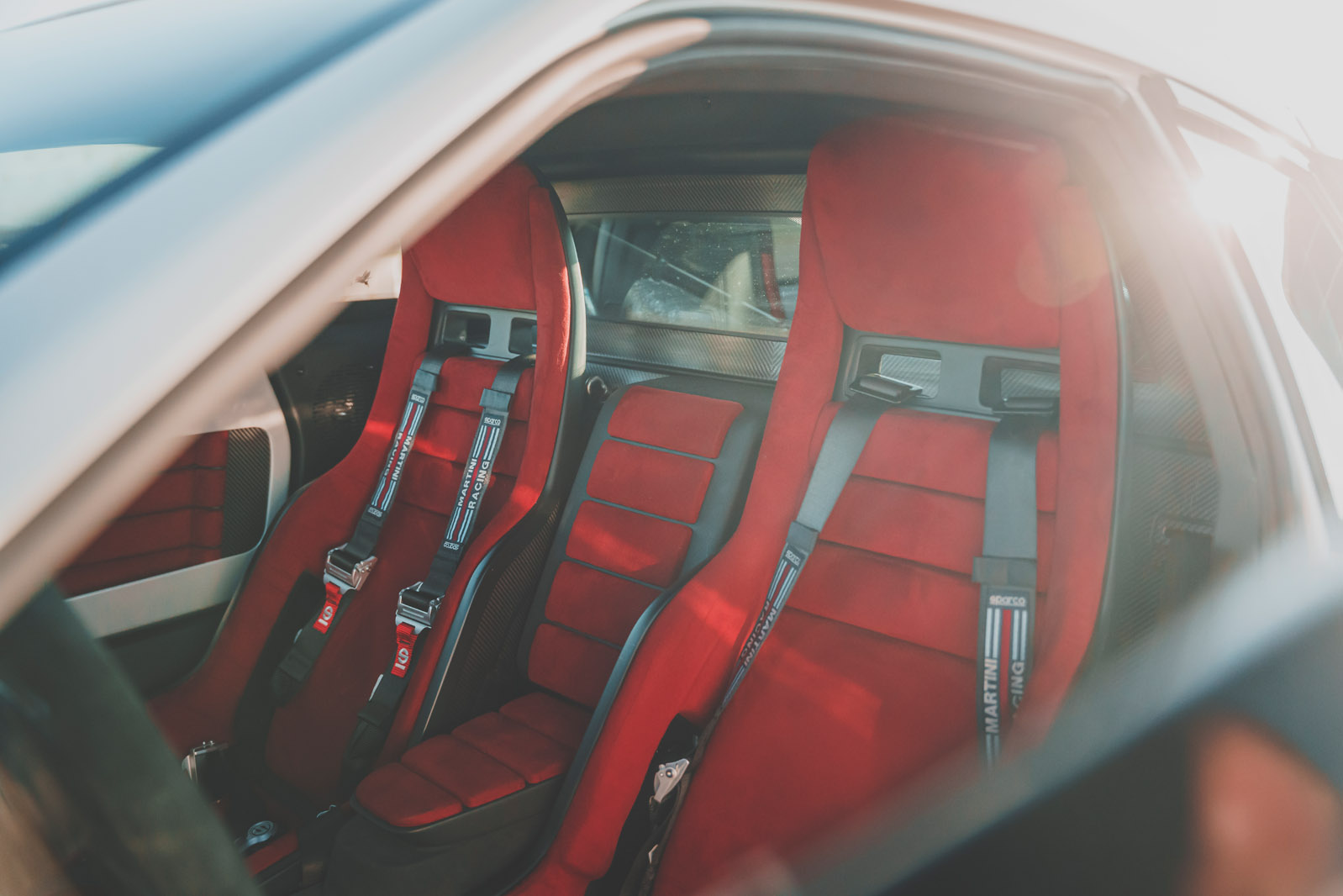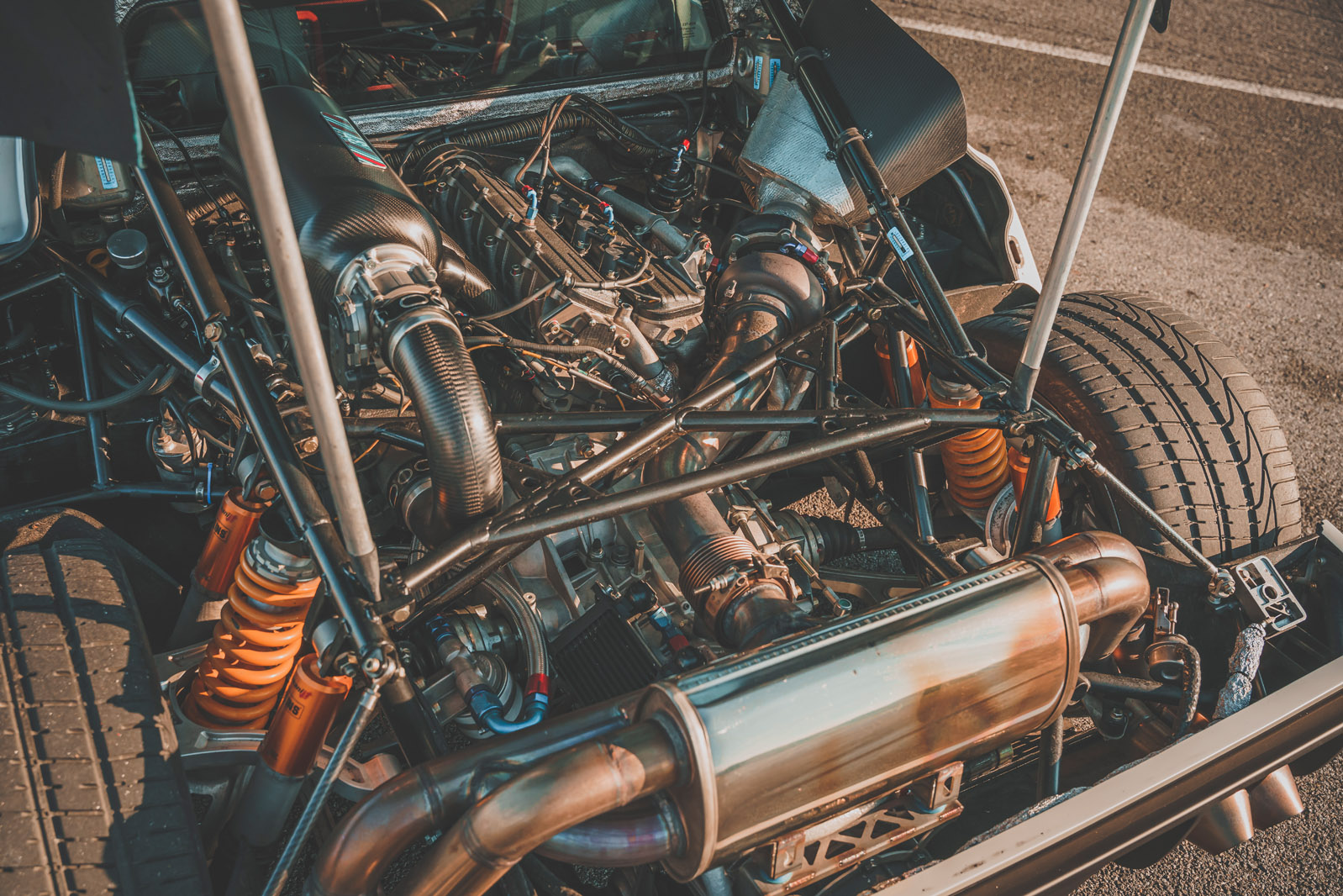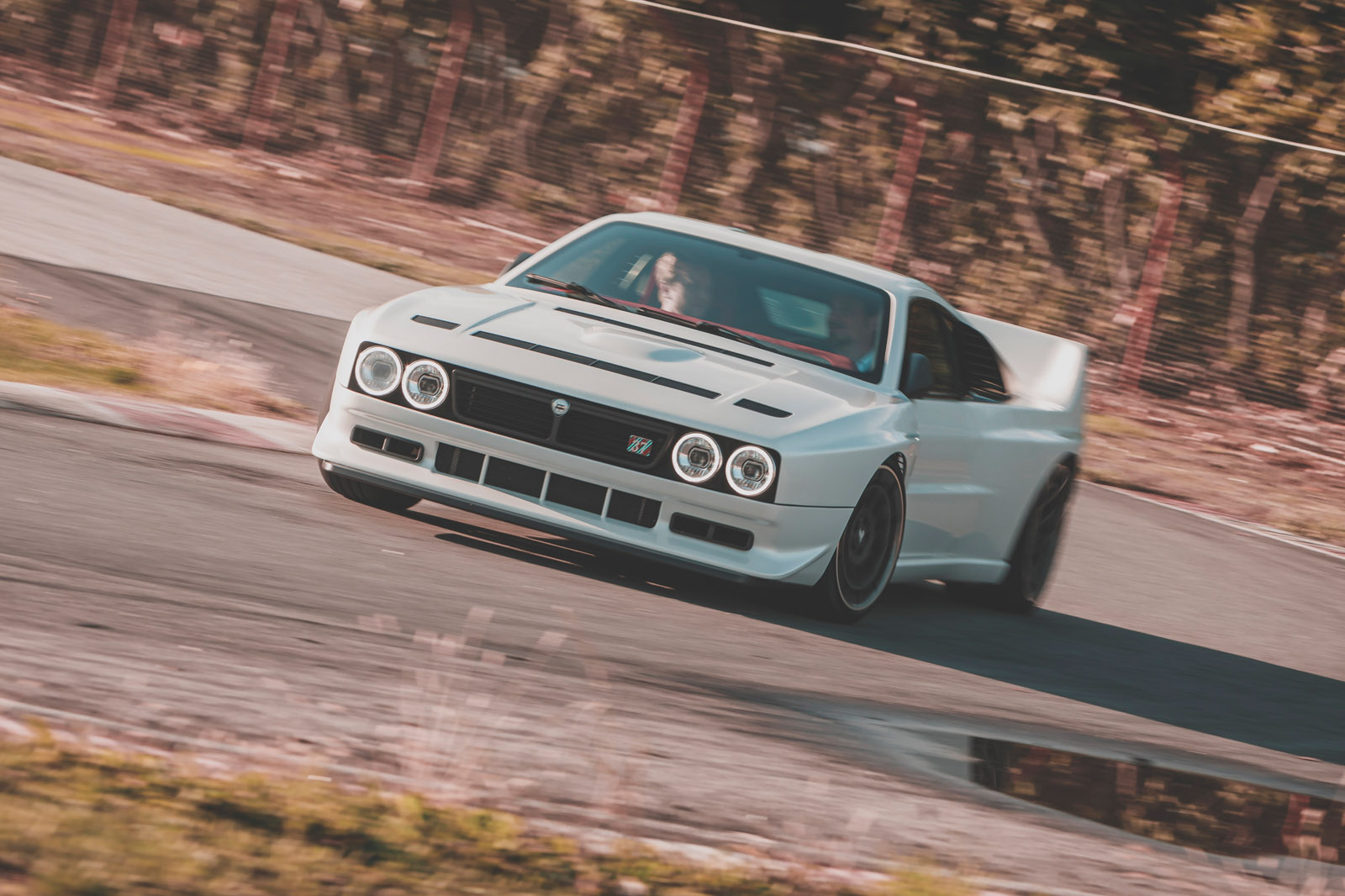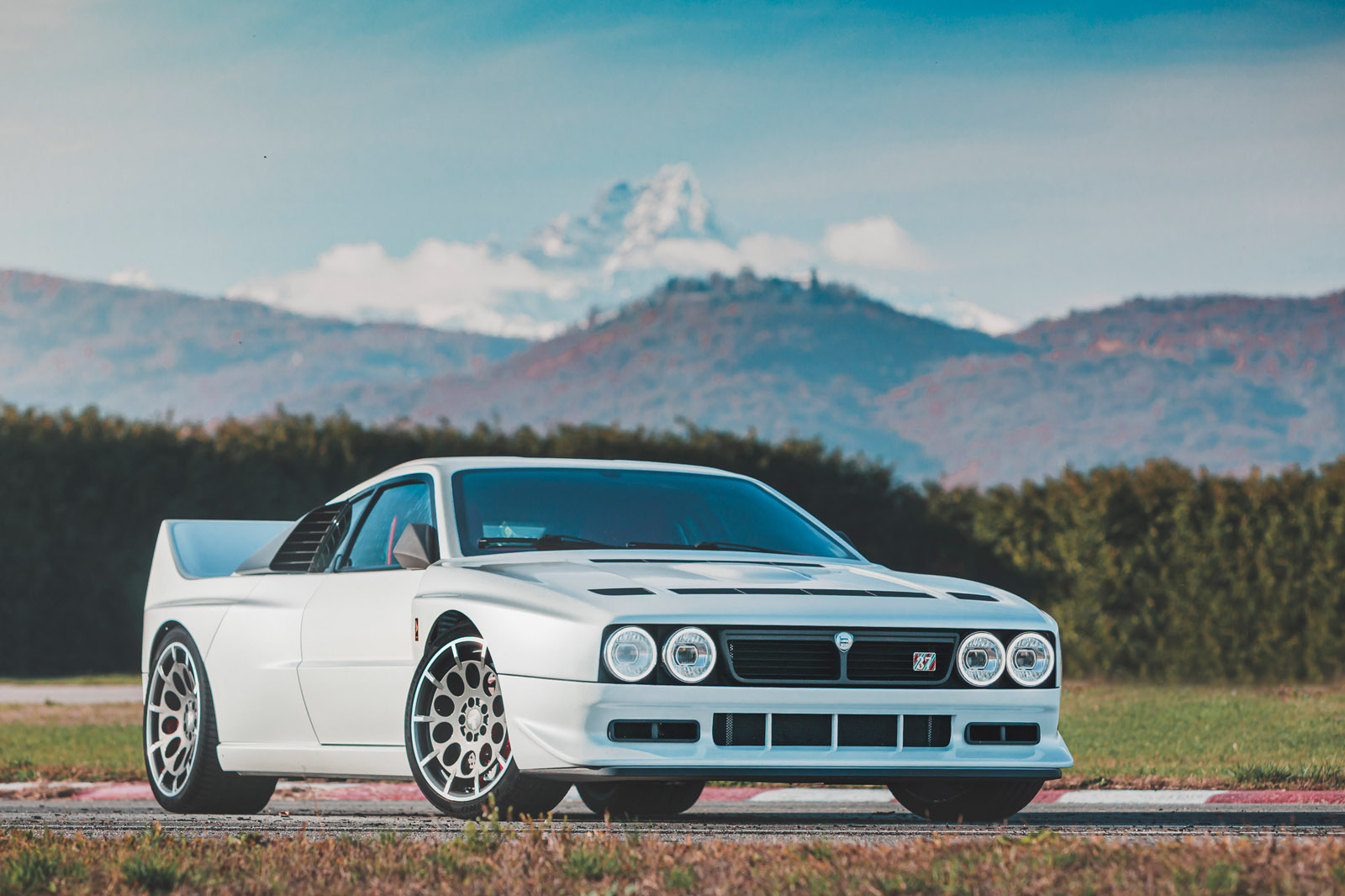The engine is the star of the show, ahead of the chassis or even the aesthetic of the Evo37. The individual of interest here is Claudio Lombardi.
He’s the man who led the powertrain development on the Group B 037 while head of engineering at Lancia. He then moved to Ferrari’s Formula 1 operation in 1991, where he masterminded the 3.5-litre Tipo 043 V12 – arguably the sweetest-singing engine ever to leave Maranello. Two decades later, he was invited by Betti to help Kimera reimagine the 2.2-litre four-cylinder steel block of the 037, ensuring that it was done right.
That challenge overcome, Lombardi was on hand to help fettle the final set-up. This involves the same Volumex supercharger that gave the 037 usefully sharp throttle response on the stages (although now electrically driven, instead of mechanically) but pairs it with the turbocharger, which comes on song only when the engine is really puffing and, ahem, somewhat advances the whole ‘reborn 037’ proposition.
For those who need it spelled out: the Evo37 is essentially running the same twin-charged powertrain as the 037’s Group B replacement, the infamously, unforgettably unhinged Delta S4, with the same circa-500bhp output. And that’s with the turbo providing only 1.5 bar.
Betti says 2.0 bar and 700bhp would quite easily be possible, but 20,000km of bench testing suggests the current calibration is not only adequately powerful, given the car’s 1050kg weight, but also very reliable.
Today, the Evo37 is putting out around 415bhp, which is still roughly what a BMW M2 CS delivers, and we have half a tonne less mass working against us.
Even at idle, the engine is brutally loud, the timbre guttural, metallic, vaguely dirt bike-esque, and not in any way woofly, as you find with modern turbo engines. Your nostrils also pick up the unambiguously old- world aroma of engine oil, although whether that will be a feature of the fully finished customer cars, I don’t know. I rather hope it will.
It’s quick, though, the Evo37. Even on this pretty serious kart track, there aren’t many opportunities to fully pull the pin from that twin-charged 2.2-litre engine, but short bursts hint at something with breathtaking straight-line speed. Betti says the Evo37 is “the most extreme car in restomod philosophy”. The new Singer DLS may have something to say about that, but it’s obvious the tall Italian isn’t dreaming.
Getting the Evo37 off the mark requires revs, lest the engine stutters and stalls as the reasonably light clutch is fed in. Thereafter it’s perfectly drivable, despite the whine of straight-cut gears and the vicious whoosh-hiss of the engine’s respiratory tract providing the audio cues of something that should be much more tetchy, even when it comes to simply mooching about.
The gearshift is also light and, although a little rubbery, precise enough. Forward visibility is excellent, and the steering, which uses a rack sourced from the Alfa Romeo Giulia Quadrifoglio, only with the gearing increased and assistance very much dialled back, has a delicate and slick action.
Overall, you wouldn’t have much difficulty using the Evo37 on the road. Think S3 Lotus Exige but with lighter controls and without the need to contort yourself in humiliating fashion while climbing in and out.
We don’t mooch for long, not on an empty circuit. What’s striking is how authentic the powertrain feels when you properly let it rip.
Even with the electric supercharger, its responsiveness in the lower rev range is only on par with what you get from modern turbo engines, but that slight bagginess just adds to the drama. And torque still arrives early, the Evo37 bolting then surging forward as the engine is augmented by the turbo.
At this point, the delivery hardens up, things get a little manic, but at Busca you must lift. Whoosh-hiss. For crisp induction noise and stunningly linear delivery, there are better restomods, mostly with flat sixes; but for sheer drama, the historically faithful heart of the Evo37 is utterly compelling.
Under its influence you will sprout aviators, a floppy side-parting and the ability to look unfeasibly good in Martini overalls.




